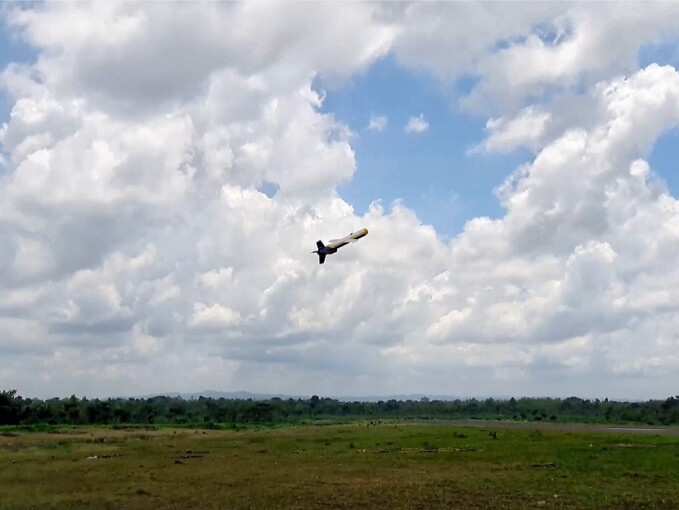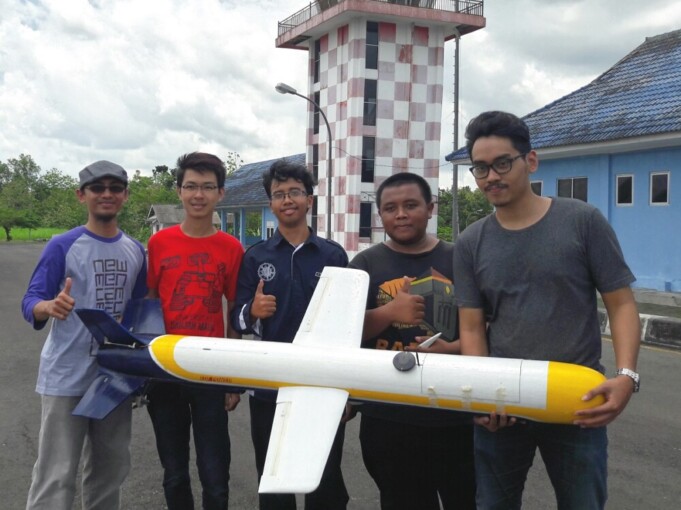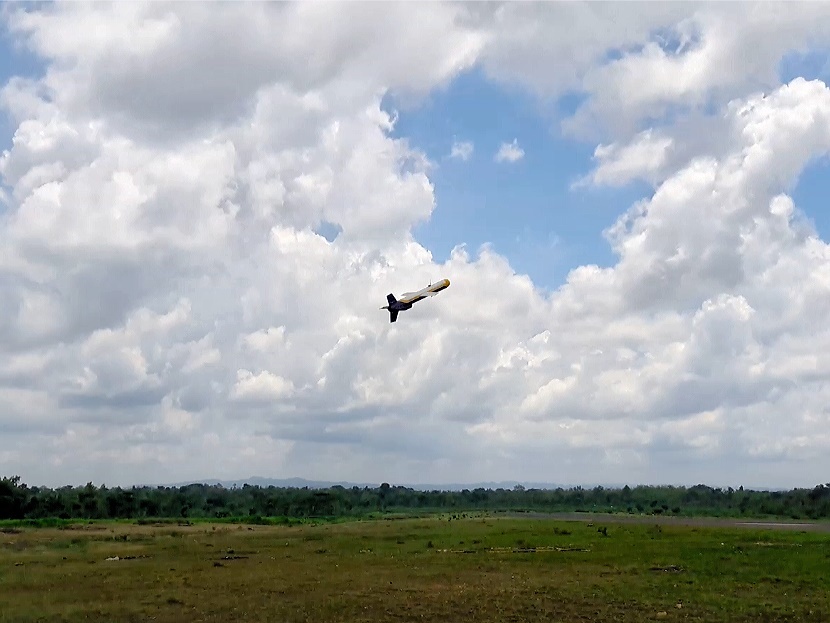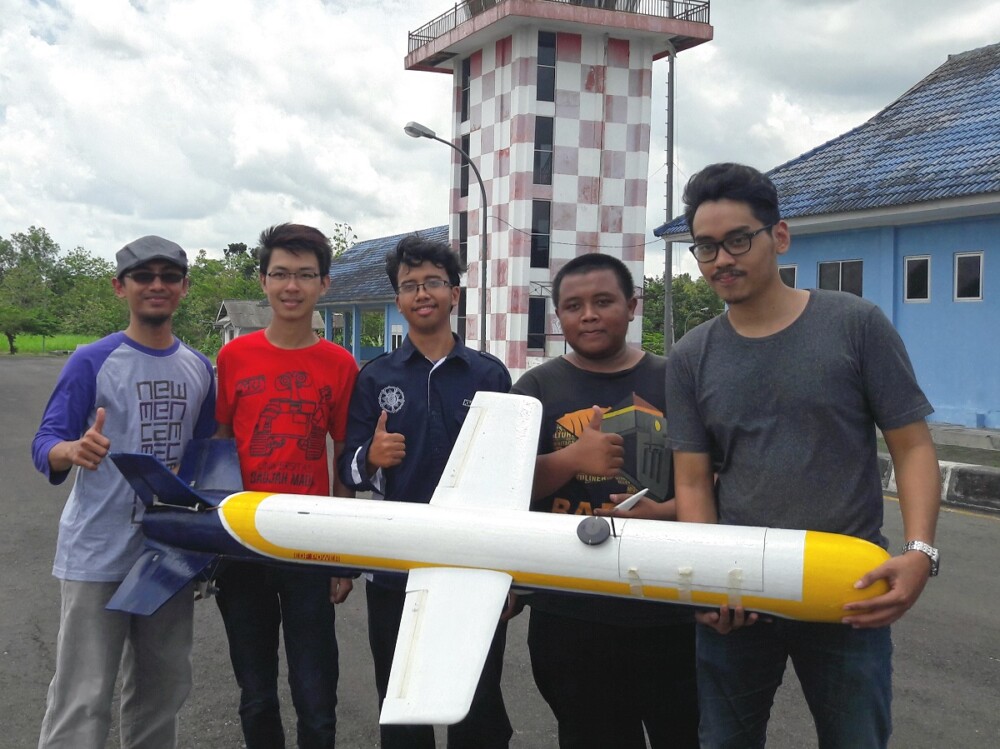A missile team from the Aeronautics Research Group at UGM succeeded in performing a flight test of their first generation missile on Saturday (Nov 11). The flight test was held at an airfield which is managed by the Indonesian Air Force in Gading, Wonosari, Yogyakarta, in collaboration with Adisujtipto Airport. The sunny weather and the intermediate wind speed in the morning supported the missile’s flight test.
The missile research done by UGM, which is named PASOPATI, will be finished within three years. The research, led by Dr. Gesang Nugroho, obtains funding from the Indonesian Ministry of Research, Technology and Higher Education. This first year, the research has focused on the missile’s design and manufacture, with the missile’s range aiming to be between 30 to 50 km. Its range and accuracy will keep being increased until the third year, when the target is 100 km.
“This first missile is designed to be able to perform a targeted attack mission on an immobile target with a low flight path, thus it would not be detected by radar,” said Gesang on Sunday (Nov 12).
The Pasopati missile, developed by Gesang and his team, uses Electric Ducted Fan (EDF) motors as its propulsion source, has a range of 30 – 50 km, a speed of 100-200 km/hour, and is able to carry a 2 kg payload. Meanwhile, its design has finished the Design Requirement and Objective (DRO), conceptual design, preliminary design, and detail design stages.
This first Pasopati missile has a length of 170 cm, a diameter of 17 cm, and weight of 0.9 kg. Electric Ducted Fan (EDF) motors are chosen due to their characteristics being similar to those of a turbojet, however, they have another advantage which is they are easy to control. In addition, the EDF’s utilization in the initial stage aims to provide data on the control method for the next development. The missile team consists of M. Agung Bramantya, Ph.D., Iswandi, M.Eng., and Isnan Nur Rifai, M.Eng.
According to M. Agung Bramantya. Ph.D. who led the flight test in Gading Airport, the result of the test shows the Pasopati missile succeeded in taking off, flying, and finished the mission autonomously at an altitude of 100 m where its maximum speed was 130 km/hour and it spent 3 minutes to go a distance of 5 km.
“In the near future, we will add to its range by using a turbojet driver, testing its maximum jet thrust, increasing its accuracy, and making it a more efficient system,” said Agung.
Agung and his team performed the flight test with four students, they are Ivan, Ghani, Yosua, and Andika.
Agung said this missile research is a strategic thing which has to be mastered by a nation. UGM researchers who consist of the lecturers and students from various faculties have started and succeeded in performing the flight test for the first generation Pasopati missile. Aside from making UGM proud, it also provides new challenges and opportunities for its development. The Aeronautics Research Group at UGM gives a broader opportunity for cooperation in developing research and technology in the aerospace sector. The spirit of heroism by the academic community is manifested in the form of research projects that are beneficial for the nation and the community.






